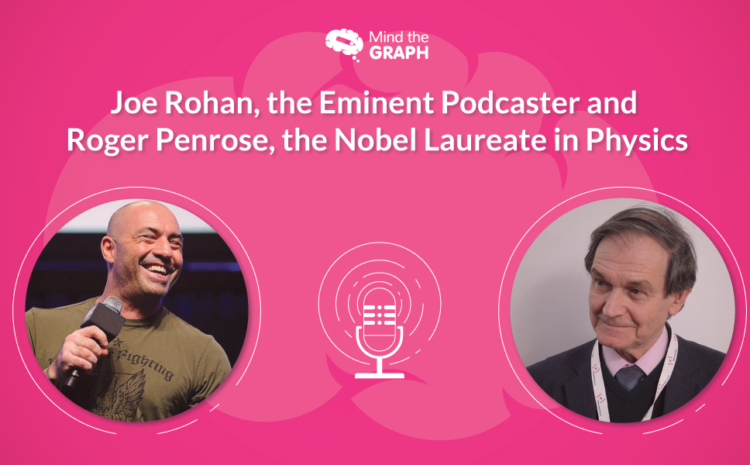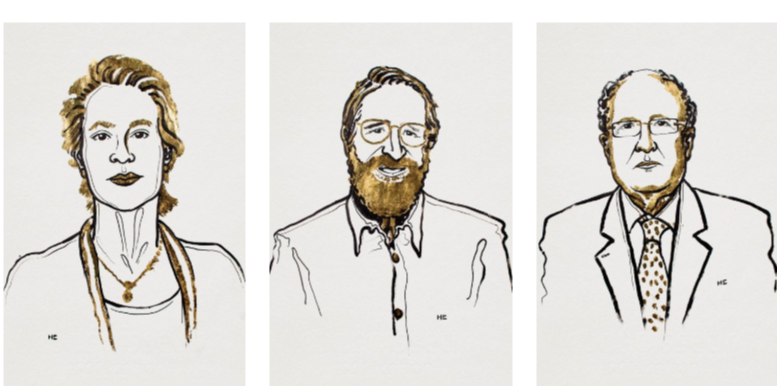If you had the opportunity to read another article I wrote about the Nobel Prize 2020 of Physics, I am sure you remember one of the three winners of the prize, Roger Penrose, for his amazing skills with math and calculus.
Besides this work, Penrose has also published articles, in the past few years about another interesting theme, different from the field of black holes.
Penrose has another area of research with consciousness and quantum mechanics.
Ok, you can say that quantum mechanics is also math and calculus, but we can say that is a different kind of math, very different from black holes.
Quantum mechanics is almost entirely based on the Schrödinger equation, while black roles are based on Einstein’s equation, you can say that the approach in each case is different.
Penrose believes and concludes in his article HAMEROFF; PENROSE, 2014 that there is a connection between the universe’s structures and our brain, more specific the biomolecular structure of the brain.
And maybe through quantum mechanics, we could explain this connection. But, what kind of connection it could be? How such a big structure like the universe can have something in common with our little big shining heads?
In 2018 a comedian called Joe Rogan welcome Penrose in his talk show, for almost 2 hours they talked about Penrose’s work, consciousness, quantum mechanics, and a bunch of other stuff.
In the subject of consciousness, Penrose shared his ideas of how hard it is to formalize an abstract understanding of consciousness and put it into the computer, like something that can be translated into numbers.
Even if you have some kind of translation and you think that the argument is correct, for you to have that feeling of judgment you have to consider rules, so you are guided by these rules, and maybe our mind doesn’t follow any rule that we know about it, making that argument and translation just not real. Get it?
Here is a line from Penrose about that: “What’s understanding? What does it mean? Is it something following the rules? Is it an algorithm?
It is not an algorithm…”, So if it is not an algorithm, what is it? And isn’t quantum mechanics something we already know?
Well, yes, we know, but we know just a little tiny part of something that seems to be so big and complex and different from everything we work with.
At the quantum level, things do not happen like happen in our reality, they are guided by totally different laws, if there is any law, all because we still don’t know.
If you watched Ant-Man from Marvel’s movies I think you get what I am talking about.
Let’s remember the Schrödinger’s cat for a moment. Schrödinger in 1935 trying to explain the concept of quantum mechanics put it in a thought experiment of a cat, one bottle of poison, and a radioactive element into a closed box.
If the element decays, the bottle of poison is broken, and the cat dies.
The point here is, with the box closed, we cannot see what is happening inside, without knowing the result of the experiment you do not know what really happened, so the cat can be both alive and dead.
That’s the interesting part about quantum mechanics, things can be two things at the same time, or can be at two places at once.

Penrose says to be convinced that what is going on inside our heads is not an algorithm, it does not follow any rule, he believes to be something else.
Something that “requires our conscious appreciation of what we are thinking about, thinking is a consciousness thing, and understanding is a conscious activity.”
Being a conscience activity like, play an instrument, be creative, working, or falling in love. These conscience activities apparently are not computation data, is something else going on.
Fortunately, a few explanations started to take place to explain all the scientists’ questions.
The answer may be in our neurons, the cells that carry on the synapses with all kinds of information, chemicals, electrics, mechanics, and thermic.
Penrose told Rogan that a few years back he received a letter from a Stuart Hameroff, saying that Penrose was not considering the neurons and structures called microtubules and that may be the absolute fundamental tool for consciousness.
Unfortunately, is not possible to isolate the quantum effects in the neurons because you get the environmental decoherence, what works in the quantum state, do not reproduce on an up level scale.
“They look just the kind of thing that could well be supporting the kind of level quantum mechanics up to a level that you could expect the quantum state to a collapse,” says Penrose to Rogan about the content of Hameroff’s letter.
Microtubules are small tubes composed of a protein called Tubulin, they have different functions in our body, but in the brain besides their conventional function like give structure support and transportation, the microtubules may have a part in carrying information in the neuron (DENT; BAAS, 2014).
Apparently, the microtubule subunits can have two different types of interactions, the A-type and the B-type.
The first one is the most symmetric, they look the same all the way around. In the brain the A-type is the one present, being the symmetry the most important characteristic to permit the information organized in a different way.
After all, what consciousness is? Asked Joe, Penrose explained that there is this kind of quantum state preserved in our consciousness level and that microtubules could be the thing that carries the quantum effect, but he does not rule out the possibility that others structures are involved, structures we do not discover yet.
Penrose suspected that there is a class of molecules that inhabit these synapses and they are symmetrical like pentagons and hexagons, having in each vortex a protein with a Triskelion shape, joining themselves along the edges like the pattern of a soccer ball. But is just the symmetry enough? Are the substances made of these proteins another major factor? And what is really the function of these proteins in the synapses? Unfortunately, we still don’t know.
Apparently, symmetry is a key role in a thing called the Yarn teller effect in quantum mechanics.
It happens when we have a highly symmetric structure and it is possible to have a big gap between the lowest energy level and the next one.
The big gap can hide important information about the lowest energy level, this lack of information is one of the problems. But “all of that is sort of suggestion of some kind of quantum phenomenon, there is still a lot to understand there,” says Penrose.
Penrose is right, we still have a lot to learn for sure, and step by step we can discover more and more about the quantum mechanics world insides our one heads.
Some people used to say that we are sort of connect to each other and to the universe through frequencies and waves, well, maybe in a certain level we are. But to know for sure, we still need more studies about it.
If you want to watch the full talk show, click here or to know more about the subject and Penrose’s work down below are some of his published articles:
DENT, E. W.; BAAS, P. W. Microtubules in neurons as information carriers. Journal of neurochemistry, v. 129, n. 2, p. 235–239, abr. 2014.
HAMEROFF, S.; PENROSE, R. Consciousness in the universe: A review of the ‘Orch OR’ theory. Physics of Life Reviews, v. 11, n. 1, p. 39–78, 1 mar. 2014.
PENROSE, R.; LANDAUER, R. The Emperor’s New Mind: Concerning Computers, Minds, and the Laws of Physics. Physics Today, v. 43, n. 6, p. 73, 11 jan. 2008.
If you are a researcher from the neuroscience field or from physics, we can help you create an infographic about neuroscience, neurology, cell biology, biochemistry, molecular biology, and Physics in Mind the Graph.
Our intention is to make your scientific content reach more and more people from the inside and outside the academic world, in a different way of communicating science. Are you ready to give it a try?

Subscribe to our newsletter
Exclusive high quality content about effective visual
communication in science.




